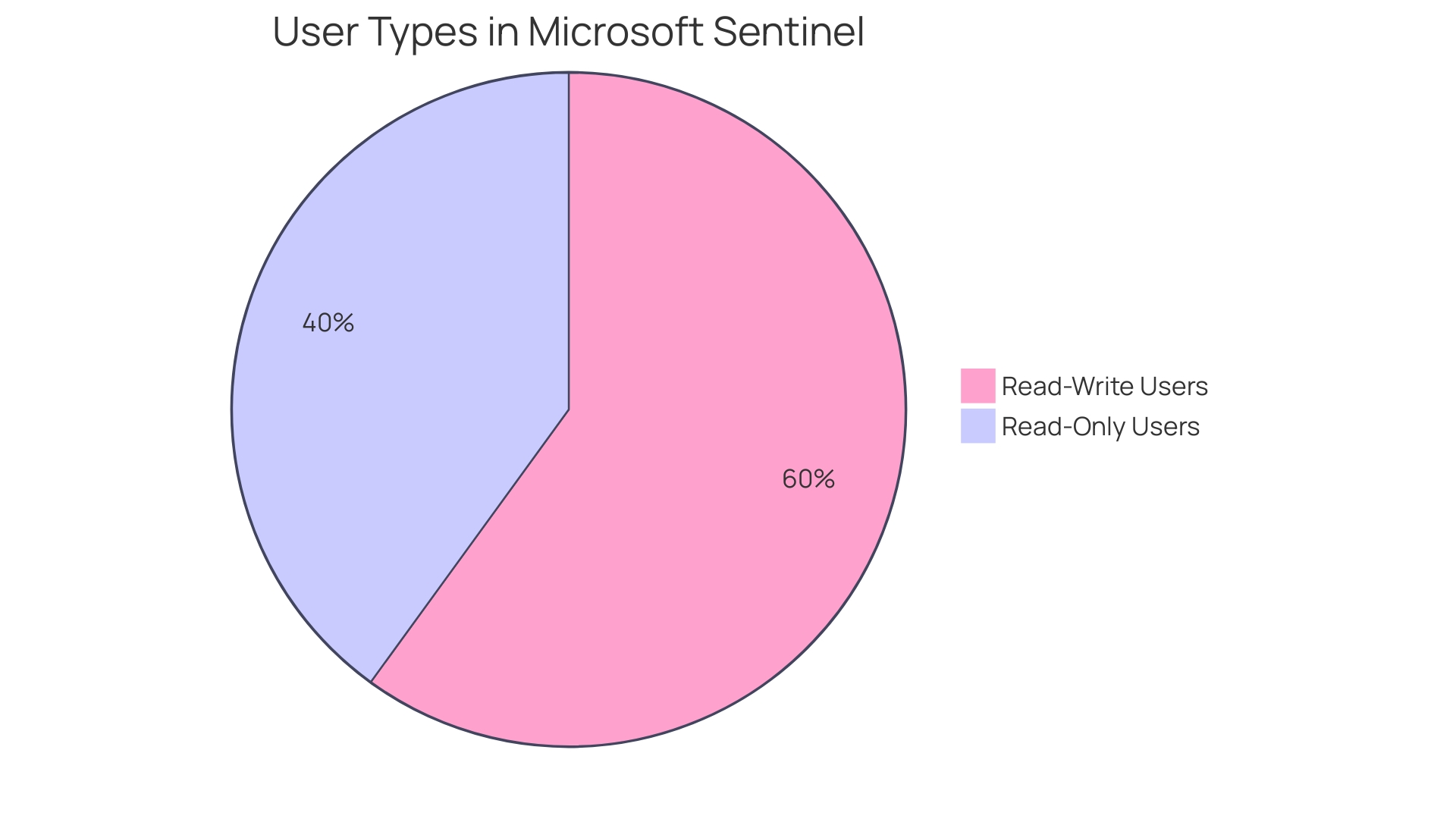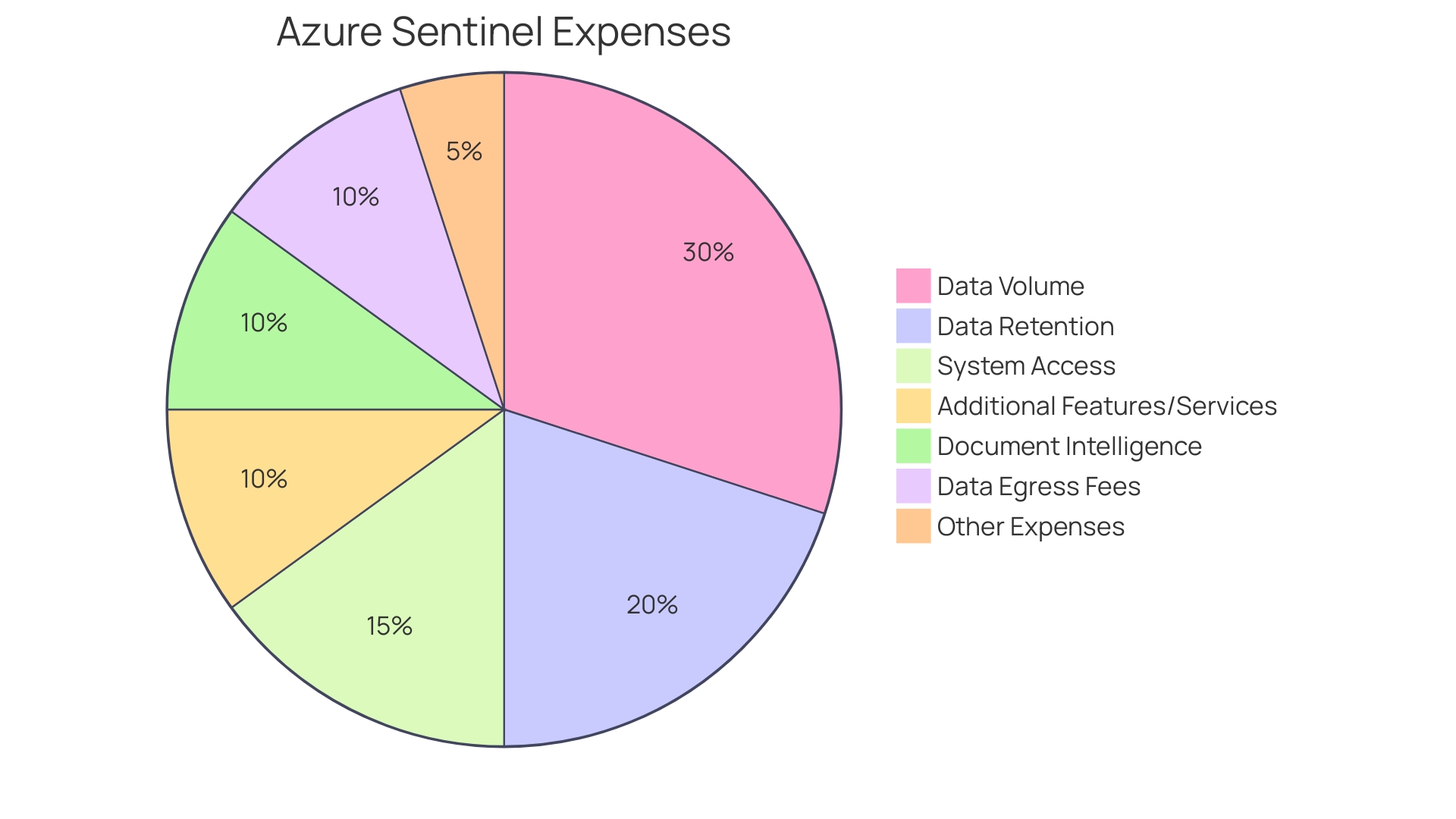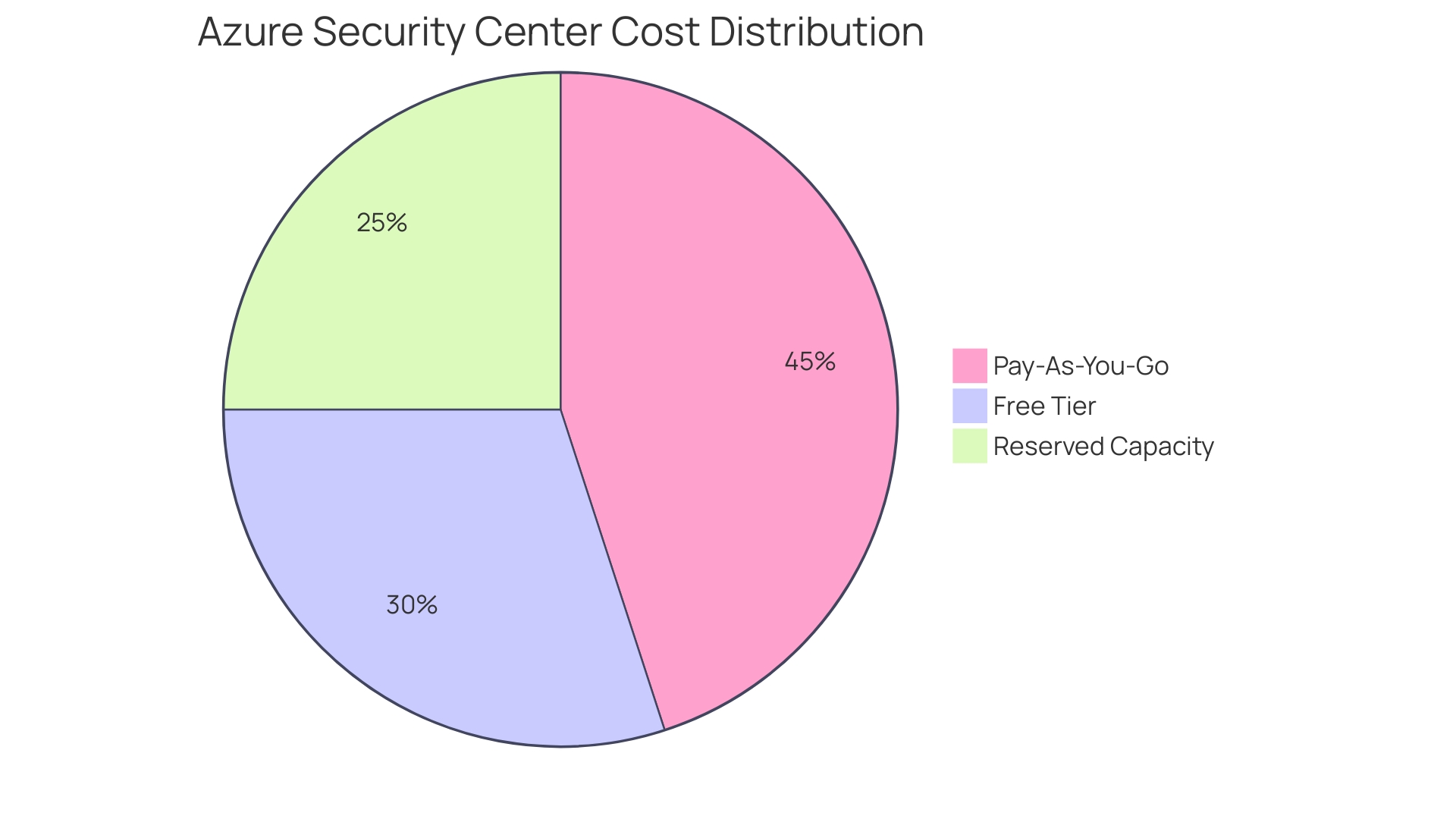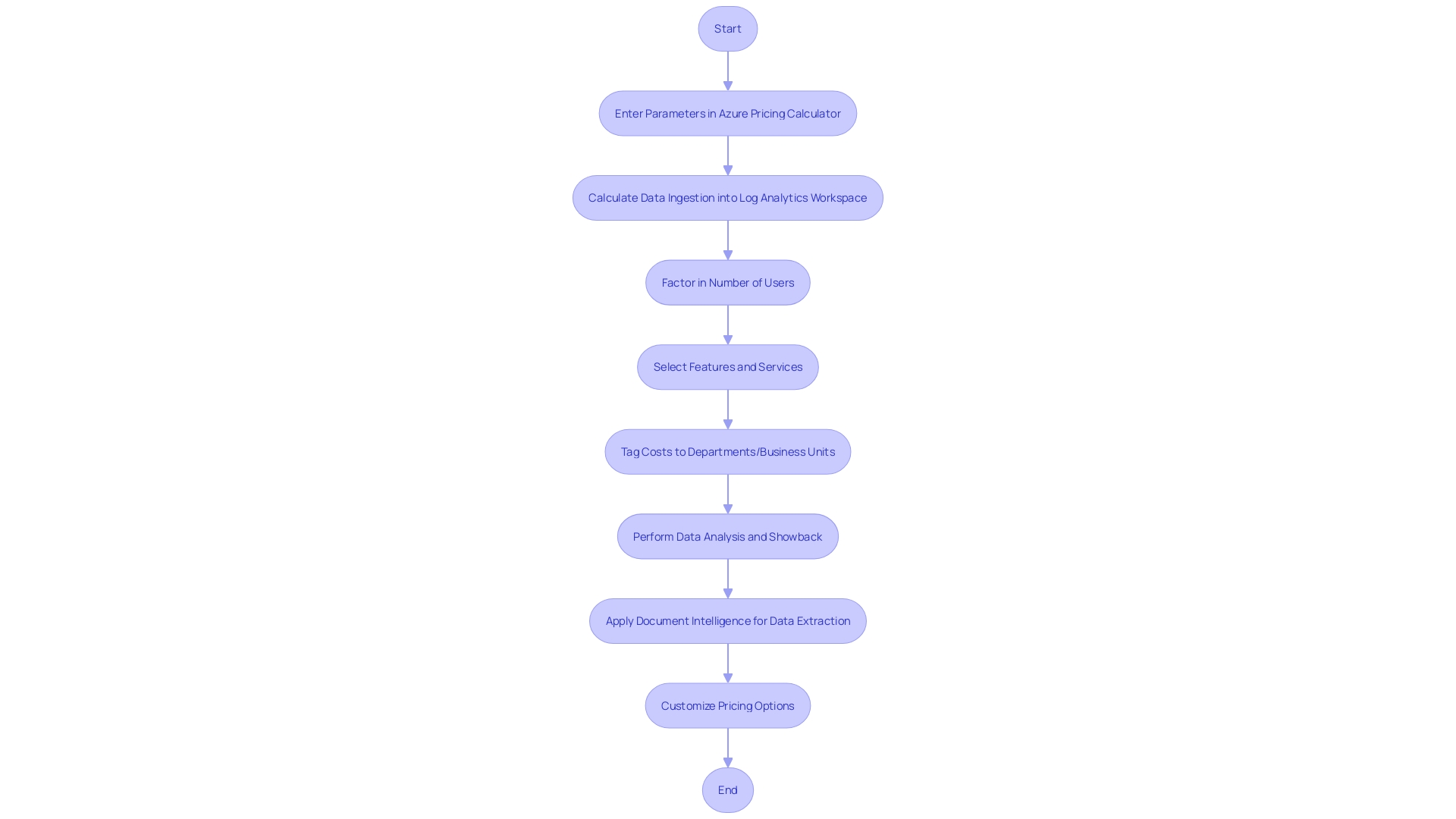Introduction
Azure Sentinel offers flexible pricing models to accommodate the diverse needs and resource utilization patterns of organizations. The two primary pricing options are the Commitment Tier and Pay-As-You-Go models. The Commitment Tier is ideal for enterprises with predictable workloads, allowing them to commit to a certain level of service for more favorable pricing terms.
On the other hand, the Pay-As-You-Go model provides maximum flexibility for businesses with variable data volumes or those scaling their operations. Both models align with an organization's operational and financial objectives, enabling a strategic approach to resource allocation and cost management. By leveraging Azure Sentinel's Document Intelligence feature, organizations can apply machine learning technology to process vast amounts of data from forms and documents, reducing the need for manual intervention and optimizing resource allocation.
Customization options are available, and it's important to note that prices provided are estimates and subject to change based on specific agreements with Microsoft.
Pricing Models: Commitment Tier vs. Pay-As-You-Go
Azure Sentinel provides a versatile cost structure tailored to meet the varied requirements and resource usage patterns of organizations. The two main models for determining prices are the Commitment Tier and Pay-As-You-Go options. The Commitment Tier model is tailored for enterprises that have a predictable workload, allowing them to commit to a certain level of service in exchange for more favorable pricing terms. This model is particularly advantageous for organizations looking to optimize their spending by locking in lower rates based on their anticipated usage levels. On the other hand, the Pay-As-You-Go model offers maximum flexibility, catering to businesses with variable data volumes or those still scaling their operations. This choice enables organizations to pay solely for the resources they utilize, guaranteeing they are not bound to a fixed expense framework. Both models are designed to align with the operational and financial objectives of an organization, enabling a more strategic approach to resource allocation and cost management. By utilizing the Document Intelligence capability of Azure's security platform, organizations can employ machine learning technology to handle large quantities of data from forms and documents, greatly decreasing the requirement for manual involvement and facilitating a more effective allocation of technical resources. To further tailor the service to their specific requirements, organizations can customize their pricing options through filters. It's important to note that the prices provided are estimates and subject to change based on the specifics of the agreement with Microsoft, including the date of purchase and currency exchange rates.
Data Ingestion Costs and Pricing Structure
Comprehending the financial implications of data ingestion in the Microsoft cloud monitoring platform is crucial for efficient budget management. The cost is influenced by various factors, including the volume and frequency at which data is ingested into the system. Document Intelligence, a feature within the platform, utilizes artificial intelligence (AI) to process and extract valuable information from documents and forms. This process involves the identification of keys, values, and tables, which are then structured in a way that maintains the original relationships, streamlining the ingestion process. This capability allows for rapid, precise, and content-specific data extraction without the need for significant manual effort or advanced data science skills.
The cost structure for Azure Sentinel's data ingestion is designed to be flexible, accommodating a range of needs and scenarios. It is important to note that listed prices are estimates and not definitive quotes. Actual expenses may vary, influenced by factors such as the agreement with Microsoft, the date of purchase, and the prevailing currency exchange rates. These prices are initially calculated in US dollars and are then converted based on the London closing spot rates from the two business days preceding the last business day of the month. If these days coincide with bank holidays in major markets, the rates are determined on the closest preceding business day. This nuanced approach to pricing allows organizations to apply filters and customize the options to align with their specific requirements.
When thinking about the financial aspect of data egress—data transferring out of Microsoft's cloud platform to the internet or other cloud providers—it's essential to recognize that these expenses can accumulate rapidly, especially when moving large volumes of data. Egress fees are usually determined by the quantity of data transferred, measured in gigabytes or terabytes, and are a distinct factor from ingestion expenses. While data ingress, or data entering the network, is usually free, egress involves charges that organizations need to plan for in their overall price strategy for using Azure.
User and Analyst Costs: Read-Only and Read-Write Users
Microsoft Sentinel, as a cloud-native SIEM platform, plays a pivotal role in detecting and responding to security threats. The effectiveness of it lies in the capacity to handle users with different levels of access and permissions, which directly affects operational expenses. Users with read-write permissions have the capability to interact and alter configurations, necessitating a higher pricing tier due to increased resource utilization. In contrast, read-only users can access necessary information without the ability to modify it, aligning with a lower expense structure.
Comprehending the intricacies of user types and their related expenses is vital for customizing the environment of the Guardian to meet the specific requirements of your organization. By carefully selecting the suitable mix of read-only and read-write users, you can maintain a robust security posture while optimizing expenditure. It's important to note that prices for these services are not fixed and can vary based on several factors, including the type of agreement with Microsoft, the date of purchase, and currency exchange rates. Estimates are based on US dollars, with conversions using London closing spot rates from the two business days preceding the month's end. Moreover, if these days coincide with a bank holiday in major markets, the rate setting day is typically adjusted accordingly. Hence, it is recommended to implement filters and personalize the cost alternatives to match your company's budget and needs.

Factors to Consider When Estimating Azure Sentinel Costs
Evaluating expenses for Azure, Microsoft's cloud-based Security Information and Event Management (SIEM) platform, necessitates taking into account multiple factors. The main factor is the amount of data, as the cost of the service is mainly determined by the volume of data consumed for analysis. Data retention policies additionally impact expenses, as longer retention periods raise the necessary storage and, consequently, the expenditure. Furthermore, the quantity of individuals with access to the system can impact the cost, particularly when taking into account the required magnitude for cooperation and reaction. Furthermore, organizations should take into account the financial implications of enabling additional features or services that enhance the capabilities of the system. By meticulously assessing these factors, organizations can form a more precise estimate of Azure Sentinel expenses that is in harmony with their operational demands and financial limitations. To ensure efficiency, Document Intelligence, an AI-powered feature, can be employed to optimize pricing options through precise, tailored data extraction from documents, negating the need for extensive manual data handling or advanced data science skills. This capability emphasizes the significance of machine learning technology in effectively managing expenses. It's important to mention that the mentioned prices are estimates and actual expenses may vary based on specific agreements with Microsoft, purchase dates, and currency exchange rates. Keeping a close watch on data egress fees is also essential, as transferring data out of the cloud network incurs charges measured in gigabytes or terabytes, which can quickly accumulate. Hence, comprehending these expense elements is crucial for managing and predicting expenses related to Azure Sentinel.

Simplified Pricing Tiers and Unified Billing
The financial oversight is made easier with its simple structure, allowing organizations to efficiently manage expenses. The system's tiered payment model is designed to scale with your usage, ensuring that you only pay for the resources consumed. Moreover, the consolidated billing feature simplifies the cost management process by combining expenses of the security service with other services from the cloud platform, thereby optimizing the invoice and payment workflows.
Embracing Azure Sentinel's cost flexibility allows for customization according to organizational needs. Document Intelligence, for example, demonstrates this by utilizing AI to handle documents and forms, providing customized cost options based on specific needs. This approach emphasizes that getting accurate, structured data need not involve extensive manual effort or deep data science expertise. Furthermore, the estimates for costs provided are based on current agreements, purchase dates, and prevailing exchange rates, with conversions anchored to the London closing spot rates, ensuring transparency and predictability in billing.
The dynamic nature of cloud pricing models is an essential consideration. As expressed succinctly, "Price is what you're charged for a product or service, corresponding to a Stock Keeping Unit (SKU), while Cost involves the product's actual utilization combined with its price." Understanding this distinction is crucial for optimizing cloud expenditures. Companies can utilize tools from Microsoft's cloud computing platform to participate in strategic expense distribution, as advised by the FinOps Foundation, which includes assigning a combined bill among various organizational divisions based on their resource usage and advantages gained.
Keeping abreast of the latest Microsoft Cost Management updates is imperative for maintaining financial discipline. These updates are designed to provide insights into spending trends, identify and circumvent inefficient spending patterns, and promote cost-optimization strategies. Such insights are pivotal in managing and anticipating expenses more effectively, as emphasized in the latest enhancements and updates from Microsoft Cost Management, where tagging is introduced as a technique to distribute expenses across departments, business units, and organizational hierarchies.
To sum up, the approach to managing expenses in the Azure security solution is evident and controllable through the billing strategy. By staying informed about models of cost allocation, utilizing the tools for cost allocation provided by Azure, and keeping track of updates in Microsoft Cost Management, organizations can navigate their journey in the cloud with confidence, ensuring that their investments in technology align with their financial capabilities and strategic objectives.
How to Enroll in Simplified Pricing Tiers
Understanding the cost structure of Azure Security Center is essential for companies looking to maximize their investments in cloud security. Azure Security offers user-friendly tiers designed to match your organization's security needs and cloud journey. The first step in utilizing Sentinel's capabilities involves establishing a Log Analytics workspace, the central repository for your security data and the backbone of the Sentinel environment.
The structure of Azure's costs accommodates a wide range of needs, starting with the initial phase of cloud adoption using the free tier, which grants access to more than 25 services for 12 months and a $200 credit for the first 30 days, and progressing to more dedicated usage through pay-as-you-go and reserved capacity choices. The flexibility to adjust as your cloud footprint evolves is a key advantage, ensuring that you only pay for the services you need.
Document Intelligence within Microsoft's cloud platform utilizes advanced AI to process and extract crucial information from documents with precision, minimizing the need for manual data handling. This advanced technology, demonstrating Azure's innovative approach, also enables customization of cost options, ensuring that you can refine expenses in accordance with your specific business needs. Prices are subject to change based on agreements with Microsoft, time of purchase, and currency fluctuations, but the platform provides tools and resources to project and manage your spending effectively.
By comprehending the cost terms in your Microsoft Enterprise Agreement and utilizing tools like Microsoft Cost Management, you can gain clarity on your spending and leverage insights to shape your cloud strategy. The process of a theoretical digital media company, from assessing cloud solutions to implementing cloud solutions, demonstrates the strategic approach to aligning cost with cloud adoption stages.
As you proceed with enrolling in the tiers of Azure's security platform, keep in mind the availability of resources and tools designed to help you extract the best value at each stage of your cloud journey. With a comprehensive grasp of the pricing alternatives and the capacity to tailor them to your requirements, you can confidently oversee your expenses and concentrate on enhancing your enterprise's security position.

Cost Optimization Strategies for Azure Sentinel
To efficiently control the costs of managing the cloud platform, it is crucial to utilize strategic optimization techniques. Incorporating optimization algorithms, similar to those used in complex software environments, can aid in reaching near-optimal solutions for resource allocation. As emphasized by CTO Mark Russinovich, these algorithms are designed to function within the constraints of limited time and computational resources, while addressing the growing complexity of services, hardware, and VMs. By optimizing resources and automating processes, organizations can effectively manage expenses in the Microsoft cloud platform. Moreover, implementing data retention policies and carefully monitoring data ingestion contribute to expense management. These measures ensure not only the containment of the costs related to the Azure Sentinel, but also the achievement of its full advantages. Utilizing tools like Microsoft Cost Management can provide deeper insights into cloud expenses, enabling the identification of inefficient spending patterns and facilitating expense optimization, ultimately allowing for more effective financial management and planning.
Using the Azure Pricing Calculator for Cost Estimation
Estimating the expense of implementing Microsoft's cloud-native security information and event management (SIEM) solution, which is known as Azure Sentinel, is crucial for planning and budgeting your security infrastructure. The Azure Pricing Calculator simplifies this by allowing you to enter specific parameters tailored to your organization's needs. For example, calculating the amount of data ingested into your Log Analytics workspace, crucial for estimating expenses, will impact your estimate of expenses. You can factor in the number of users and select various features and services that align with your security posture. It's important to remember that while prices are estimates and may not reflect the final billing, they are a close approximation. The actual price may vary based on agreements with Microsoft, purchase dates, and exchange rates. By leveraging the Pricing Calculator with your unique requirements, including tagging costs to different departments and business units, you can achieve a more transparent and optimized budget for your Sentinel deployment.

Conclusion
In conclusion, Azure Sentinel offers flexible pricing models, the Commitment Tier and Pay-As-You-Go, catering to the diverse needs of organizations. By leveraging Azure Sentinel's Document Intelligence feature, organizations can apply machine learning to process data from forms and documents, reducing manual intervention and optimizing resource allocation. Understanding the cost implications of data ingestion, egress, and user types is crucial for effective budget management.
Azure Sentinel's simplified pricing tiers and unified billing streamline cost management, while tools like Microsoft Cost Management provide insights into cloud expenses and facilitate optimization. In summary, Azure Sentinel's pricing models, customization options, and cost management features enable organizations to align their cloud security investments with their operational and financial objectives.




